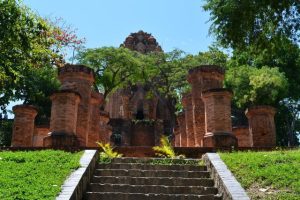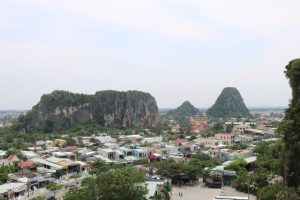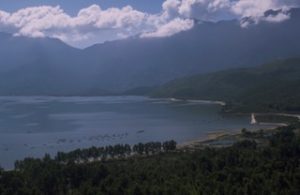Three spectacular reasons to add Vietnam to a traveler’s bucket list
The Cham Empire, Marble Mountains, and Hoi An Vietnam are all significant aspects of Vietnam’s history and culture. The Cham Empire, which existed from the 2nd to the 17th century, was a powerful kingdom that spanned much of central and southern Vietnam, as well as parts of Laos and Cambodia. The Marble Mountains, located near the city of Da Nang, are a cluster of five limestone and marble hills that have been a site of religious and cultural significance for centuries. Hoi An, located on Vietnam’s central coast, was a major trading port during the Cham Empire and later became an important center of trade between Asia and Europe.
The Cham Empire was a powerful kingdom that emerged in central Vietnam around the 2nd century CE. The Cham people, who were of Austronesian descent, built a sophisticated civilization that was heavily influenced by Indian culture. The Cham Empire was organized into a series of city-states, each ruled by a local king or queen. These city-states were often in conflict with each other, but they also maintained trade and diplomatic relations with other kingdoms in Southeast Asia, India, and China.
One of the most important aspects of Cham culture was their religion. The Cham people practiced a form of Hinduism that was heavily influenced by Buddhism and animism. They built elaborate temples and shrines to their gods and goddesses, many of which still stand today. The most famous of these is the My Son Sanctuary, located near the city of Hoi An. This complex of Hindu temples and tombs was built between the 4th and 14th centuries and is considered one of the most important archaeological sites in Vietnam.





Another important site in Vietnam’s history is the Marble Mountains, located just south of Da Nang. These five hills, which are made of limestone and marble, have been a site of religious and cultural significance for centuries. The mountains are named after the five elements – metal, wood, water, fire, and earth – and are believed to be home to various spirits and deities. The Marble Mountains are also home to a number of Buddhist temples and pagodas, some of which date back to the 17th century.
The city of Hoi An, located on Vietnam’s central coast, was a major trading port during the Cham Empire and later became an important center of trade between Asia and Europe. The city’s historic district, which is now a UNESCO World Heritage site, is home to a number of well-preserved buildings and structures that reflect the city’s diverse cultural influences. These include Chinese temples, Japanese merchant houses, and French colonial buildings. Hoi An is also known for its lanterns, which are a traditional symbol of the city. Visitors to Hoi An can take a lantern-making workshop or participate in the city’s annual lantern festival.
Today, the Cham Empire, Marble Mountains, and Hoi An Vietnam are important cultural and historical sites that attract visitors from around the world. The My Son Sanctuary and Marble Mountains are popular destinations for tourists interested in Vietnam’s ancient history and culture. Hoi An, with its well-preserved historic district and vibrant culture, is a popular destination for those interested in architecture, food, and traditional arts and crafts.
Since 1989, First Cabin Travel has arranged custom luxury-styled itineraries to unique and various destinations worldwide with the mainstay of bookings derived from repeat clientele and their enthusiastic referrals.
First Cabin is your passport to excellence. CA Reg 2018168-40


